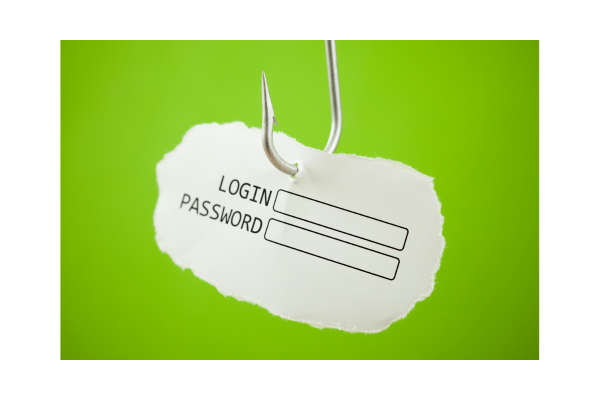
Every woman business owner knows that running a business today means being online—connecting with customers, managing finances, and building your brand. But with that convenience comes a growing risk: phishing scams.
If you’ve ever felt anxious or overwhelmed by warnings about cyber threats, you’re not alone. In many reports, women are more likely to report falling victim to scams than men. According to the FTC, women account for a significant portion of scam reports—especially in areas like online shopping and romance scams.
The good news is, you don’t need to be a tech expert to protect yourself, your team, and your customers. Most phishing scams rely on tricking people rather than hacking computers, and with a few practical steps, you can dramatically reduce your risk and keep your business safe. Let’s break down the two main ways phishing can target your business—and exactly what you can do about it.
Phishing Scenarios
Direct Phishing: When You or Your Team Are the Targets
Brand Impersonation: When Attackers Target Your Customers
Direct Phishing: When You or Your Team Are the Targets
Phishing attacks often arrive as emails, texts, or calls that look official and urgent. The goal is to trick you or your employees into sharing sensitive information, clicking a dangerous link, or opening an attachment that can compromise your business.
What can you do?
Pause and Verify
-
If you get an unexpected or urgent message—even if it looks official—take a breath and double-check. Call the sender using a phone number you know is real (not the one in the message).
Be Cautious with Links and Attachments
-
Don’t click on links or open attachments from people you don’t know, or from messages that seem odd.
-
If you must open a PDF, check first with the sender or use a secure viewer. Some businesses use tools like Locklizard, but built-in browser viewers or cloud services like Google Drive’s preview feature also add a layer of safety.
-
If you preview the link and it's been shortened (such as with tinyurl), there are a number of free preview tools such as CheckShortURL to in turn preview where that link might go. (Nesting redirected links like this is one way they try to hide malicious links from scanning tools and get you to click on them.)
Strengthen Your Logins
-
Use strong, unique passwords for every account. Password managers can help you keep track.
-
Turn on multi-factor authentication (MFA) for your email and business accounts. This adds a second layer of protection, like a code sent to your phone. (Hardware keys such as Yubikeys are most secure.)
Keep Devices Updated
-
Enable automatic updates for your computer, phone, and apps. Updates fix security gaps that scammers exploit.
Educate Your Team
-
Remind employees or contractors -- anyone with access to your network, email system, accounts -- to be cautious with unexpected messages and to ask for help if something seems suspicious.
-
Make it okay to double-check! A quick question can prevent a big problem.
If Someone Clicks a Phishing Link
-
Don’t panic! Change your password for that account right away.
-
Run a security scan on your device (most computers and phones have built-in tools).
-
Notify your bank or IT support if sensitive info (like payment details) was entered.
-
Let the rest of your team know so they can be extra alert.
-
A blameless culture helps team members speak up quickly without fear of getting in trouble.
Brand Impersonation: When Attackers Target Your Customers
Attackers may create fake versions of your website or social media profiles to trick your customers into giving up money or information.
How to monitor and protect your brand online
Set Up Brand Monitoring
-
Use free tools like Google Alerts: Go to Google Alerts, enter your business name, and get email notifications when your brand is mentioned online.
-
Try beginner-friendly platforms like BrandMentions, Brand24, or Awario for more detailed tracking (these can monitor social media, blogs, news, and forums in real time).
-
Social media tools like Hootsuite or Brandwatch can help you spot fake profiles and mentions quickly.
What to Watch For
-
Websites with addresses similar to yours (for example, yourbusiness.com vs. yourbusines.com).
-
New social media accounts using your business name or logo.
-
Unusual reviews or customer complaints about things you didn’t do.
What to Do If You Spot a Fake
-
Report fake websites to their hosting company or use Google’s “Report a Phishing Page” tool.
-
Report fake social media accounts directly to the platform (Facebook, Instagram, X/Twitter, etc.).
-
Let your customers know about scams using your name so they can be cautious.
Preventing Phishing Links from Reaching Your Customers
-
Use email services with built-in spam and phishing protection.
-
If you send emails to customers, use clear, consistent branding and let them know what to expect from you.
-
Remind customers: You’ll never ask for sensitive information by email or message.
-
Encourage customers to report suspicious messages they receive in your name.
-
Tip: Consider an annual notice to customers summarizing these things, letting them know the ways you are looking out for them.
If a Customer Falls for a Scam
-
Respond with empathy and clear instructions: Advise them to change passwords, contact their bank if money was lost, and forward the scam message to you for review. (Depending on the severity, this may be a good time to check in with your lawyer or insurance provider. While you're likely not at fault, a professional can help you phrase your response in a way that’s both empathetic and legally sound.)
-
Share a public post and email alerting all customers to the scam and how to stay safe.
Most phishing attacks rely on catching people off guard
By building a few simple habits—slowing down, verifying messages, using monitoring tools, and encouraging open communication—you can keep your business and your customers safe.
You’re resilient, resourceful, and more in control than you think. And if you ever feel unsure, reach out to me or your managed service provider if you use one, or a fellow business owner. Together, you can handle anything the digital world throws your way.


